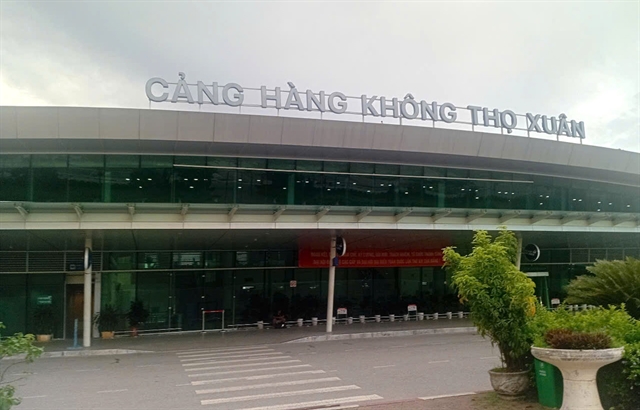 Society
Society


|
| Thọ Xuân Airport, where drone intrusions occurred on June 13 and 14, posing a threat to aviation safety. — VNA/VNS Photo |
HÀ NỘI — Việt Nam’s aviation sector, long known for maintaining a high level of safety, is now facing growing challenges.
In the first half of 2025, while no accidents or serious incidents were reported, authorities have recorded a notable rise in low-level aviation incidents, with half of them linked directly to human error.
Between December 16, 2024, and June 15, 2025, the Civil Aviation Authority of Vietnam (CAAV) registered 36 low-level incidents, classified as Category D under national aviation regulations. This represents an increase of more than 28 per cent compared to the same period in the previous year.
A deeper look into the causes reveals that 17 of the 36 incidents were due to human factors, while another 17 were attributed to technical faults in aircraft systems. Only two incidents were linked to weather conditions.
Although some indicators, such as passenger injuries and compliance with parking positions, have shown some progress, the airspace environment itself is becoming increasingly complex and hazardous.
One high-risk incident (Category C) did occur during this period and is now under official investigation. Unlike Category D, Category C events involve more serious consequences, such as infrastructure damage or significant injuries.
Compounding the problem is a sharp increase in bird strikes, which reached 49 cases in just six months. Unmanned flying objects, such as drones, have emerged as a growing concern. These objects, some of which directly interfered with flight operations, were involved in 59 separate incidents, raising red flags for both airline operators and airport security.
The skies over Vietnamese airports have also seen a rise in laser interference. Aircraft were targeted by laser beams in 24 separate cases, posing real danger during critical phases of flight such as approach and landing.
There was also an increase in collisions involving service vehicles, airport infrastructure and personnel, with six new incidents recorded.
The CAAV is responding by tightening regulations and ramping up oversight. Authorities have begun reviewing and updating safety protocols in line with ICAO recommendations and are implementing a comprehensive 2025 safety monitoring programme that covers operators, maintenance organisations, and training institutions.
Airports with high traffic volumes, including Nội Bài, Tân Sơn Nhất, Đà Nẵng, Cam Ranh, Phú Quốc and Vinh, are undergoing increased inspections, particularly during holidays and other peak travel periods.
Air traffic management is also under scrutiny. Procedures are being refined to prevent confusion between similarly named flights and to improve coordination with military authorities in issuing NOTAMs, which are official bulletins that inform pilots of potential hazards.
Several outdated practices, including certain taxiway hold points, are being eliminated.
Meanwhile, the focus on physical infrastructure has intensified. Maintenance crews have been instructed to conduct continuous inspections of runways, taxiways and parking stands to detect any damage or foreign object debris. Wildlife control is also being strengthened in an effort to prevent further bird strikes.
These issues are not theoretical. In mid-June, several Vietjet flights bound for Thọ Xuân Airport in Thanh Hóa Province had to be diverted due to the appearance of an unidentified flying object near the airport.
The disruption caused a ripple effect across other flights, and the airport was temporarily closed from just after 6pm on June 16 until 6am the following day, due to technical concerns.
At the Nội Bài International Airport, officials reported that sightings of unmanned flying objects have increased by more than 11 per cent compared to last year, reflecting a concerning upward trend.
In Đà Nẵng, pilots recently reported laser beams aimed at their aircraft during final approach. These beams originated 12 to 15km from the airport, at altitudes between 600 and 900m, prompting fresh safety alerts.
According to Vietnamese aviation regulations, incidents are divided into five categories: Category A (fatal accidents), Category B (serious incidents), Category C (high-risk safety threats), Category D (low-risk incidents that still endanger operations) and Category E (minor events that do not directly impact safety but disrupt service delivery).
While there have been no Category A or B events this year, the rise in Category D and the emergence of a Category C incident serve as a clear warning for the sector. — VNS




